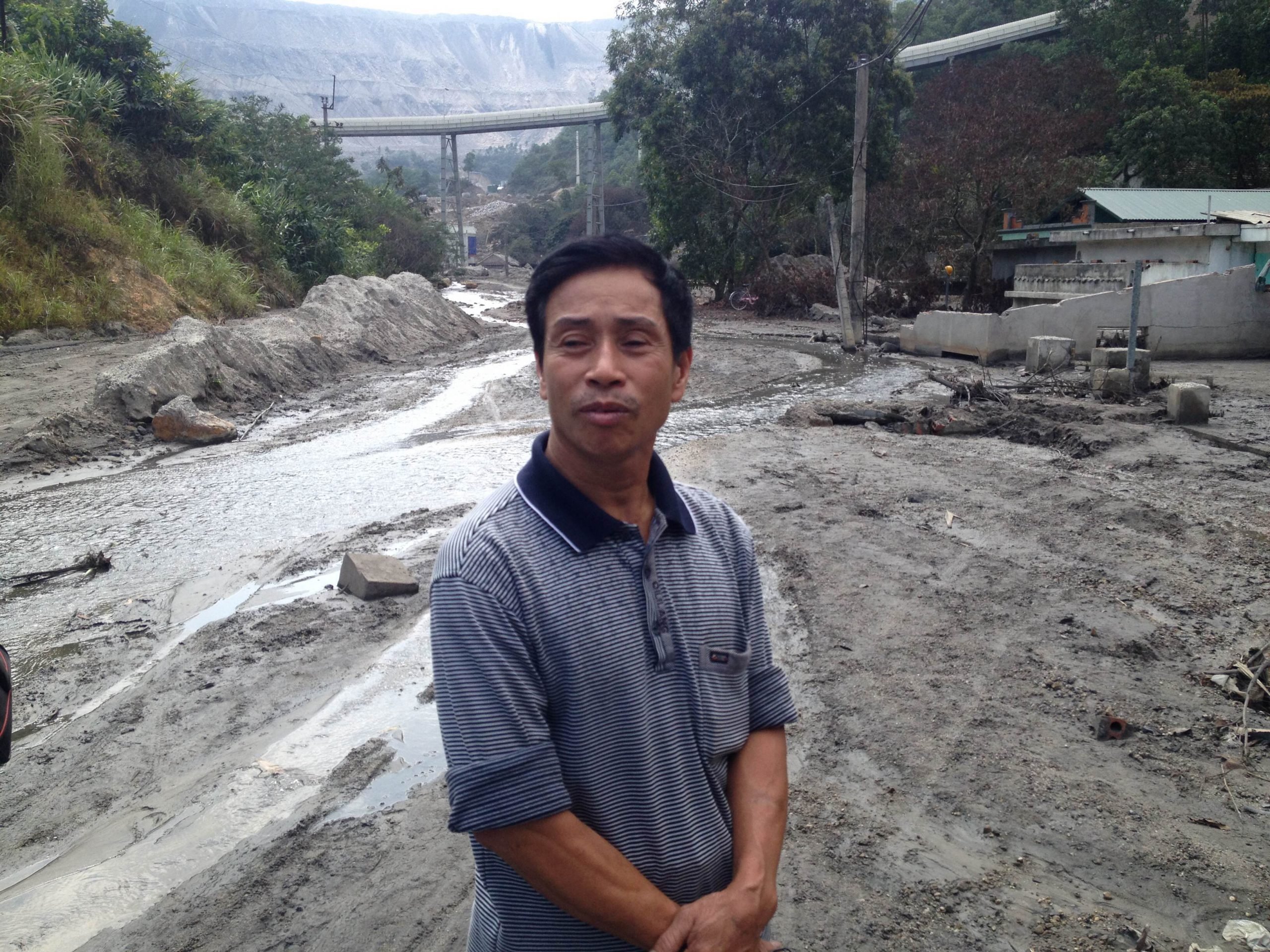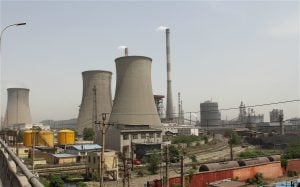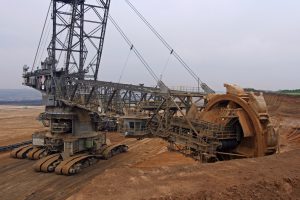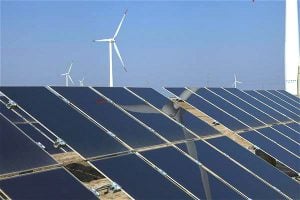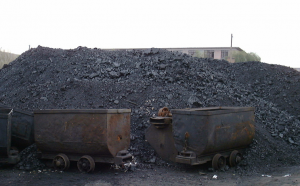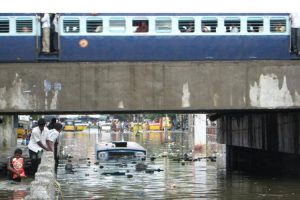A heap of coal waste the size of an apartment complex looms above Do Thi Chung’s low-rise neighbourhood. One evening this July, she watched as the heap was pelted by heavy rains.
Soon a river of muddy sludge was pouring downhill from the heap toward Chung’s front door, she recalled. When the water level of the landslide reached knee level, she took her children up to their home’s second level.
Now her ward of this northern Vietnamese city is mostly deserted. Piles of dried sludge block doors and windows, and a dirty stream runs through a central street, forcing pedestrians to cross at some points on makeshift wooden bridges. Chung, whose husband works at a nearby coal mine, said all but seven of the ward’s 47 families have moved out.
“We never imagined that we would be in this kind of situation,” she said bitterly, sitting under a tarpaulin outside her kitchen. “Everything is covered in dirt.”
Vietnam expects its domestic power demand to grow sharply, from 169.8 terawatt-hours (TWh) in 2015 to 615.2 TWh by 2030. It plans to meet this demand by building new power plants that would burn domestic and imported coal. By 2030, coal is expected to contribute 56% of Vietnam’s power mix, up from 36% today.
Vietnam’s embrace of coal – the fuel blamed most for climate change and a major polluter in industrialising societies over the last few centuries – is already an environmental disaster.
The July floods and landslides in northern Vietnam inundated major open-pit coal mines and killed at least 17 people, prompting a backlash from scientists and environmentalists. A spokesperson from the Chemical Society of Vietnam, a professional scientific organisation, told a local newspaper that the property and environmental damage from the floods was a direct result of geomorphological changes linked to years of coal mining. And the Waterkeeper Alliance, a New York-based non-profit organisation, said the floods highlighted a failure to protect communities from the risks that Vietnam’s coal-waste facilities pose to nearby communities.
Now Vietnamese civil-society groups are warning that the economic benefits of new coal-fired power plants will not justify the impacts on the country’s air, water or people.
“We are very concerned” about Vietnam’s plans for its coal sector, said Nguy Thi Khanh, director of the Green Innovation and Development Centre, a Hanoi-based group that advocates the use of clean energy. “Our government and business makers really ought to reconsider.”
Cam Pha lies in northern Quang Ninh province, where deposits of anthracite coal account for about 90% of Vietnam’s coal output, according to the Vietnam Mining Coalition, a Vietnamese advocacy group. The main road to the city is flanked by multi-story coal plants with crisscrossing conveyor belts, red-and-white smokestacks, and heaps of jet-black coal that lie directly beside the Ha Long Bay and the South China Sea. The picturesque Ha Long Bay is a UNESCO World Heritage site visited by millions of tourists each year
See also: Southeast Asia turning away from coal power.
Tran Thi Thanh Thuy, coordinator of the Vietnam Mining Coalition, said Quang Ninh has been a source of coal production for over a century, and that surface mining still accounts for 60% of its coal output despite recent efforts by Vinacomin, Vietnam’s state-owned coal giant, to shift development towards underground mines. Coal mining in the province releases 4.6 billion tonnes of solid waste per year, she added, citing figures from the Ministry of Industry and Trade.
Toxic legacy
“Coal mining activities are creating many environmental consequences such as dust, acid drainage, and heavy metal pollution,” Thuy said.
Few studies address the links between coal mining and pollution in Vietnam. But the Asian Development Bank reported in 2009 that mining and other activities posed “major challenges” to Vietnam’s groundwater, and that none of the country’s river basins met national drinking-water standards.
Researchers from Greenpeace and Harvard University also reported this year that coal emissions in Vietnam had caused an estimated 4,300 deaths in 2011 and could cause 25,000 annual deaths by 2030 based on current industry projections.
And the results of a study of rice-paddy soils in Cam Pha “strongly suggest a continuous input of some toxic metals from coal-mining operations to agricultural lands,” an international team of scientists reported in 2013.
“Our results imply a sustained absorption of metals by native rice plant varieties, which may lead to metal accumulation … in human organs and in turn to severe disease,” they wrote in the academic journal Environmental Science and Pollution Research.
Global emissions
In a recent submission to the United Nations Framework Convention on Climate Change, Vietnam pledged to unconditionally reduce its greenhouse gas emissions by 8% over the next 15 years.
But the pledge was made against a “business as usual” plan to dramatically increase greenhouse emissions — from 246.8 in 2010 to 787.4 million tonnes by 2030. Vietnam said in the proposal that it could cut potentially emissions by up to 30% over the same time period, but only with financial support from other countries and international agencies.
A March report by CoalSwarm, an advocacy project funded by the Sierra Club and other American environmental groups, said Vietnam accounts for 17 of the 276 gigawatts’ worth of coal-fired power plants under construction worldwide — the most by far of any Southeast Asian country, including the coal powerhouse Indonesia.
China props Vietnam’s coal sector
Vietnam’s power sector is dominated by coal and hydropower projects operated by Vinacomin and a state-owned power giant, Electricity Vietnam. Some power projects are wholly owned by private or state-owned Vietnamese companies. Many others have Chinese investment partners, or rely heavily on Chinese technology.
In the hydropower sector, Chinese investment has been steadily increasing over the last two decades, and Chinese firms now supply up to 90% of the sector’s equipment, according to a conference paper published in May by the Netherlands-based BRICS Initiatives for Critical Agrarian Studies.
In the coal sector, eight existing or planned Vietnamese coal plants have Chinese investors, according a database compiled, based on news media reports, by CoalSwarm.
In July, Vinacomin announced that two Chinese companies plan to build a 1,200-megawatt coal-fired power plant in southern Binh Thuan province. According to Reuters, its US$1.75 billion price tag makes it the largest Chinese investment in Vietnam.
“We cannot reject the value foreign investors (and) contractors in general and Chinese investors in particular bring to Vietnam, particularly high technology, good management staff and high capital inflow,” Oliver Massmann, an expert on Vietnam’s energy sector and a partner at the Vietnam office of Duane Morris, an American law firm, said in an email.
Paradox
But Lauri Myllyvirta, a Beijing-based campaigner at Greenpeace who specialises in coal power, said China’s investments in Vietnam’s coal sector seem paradoxical because China is increasingly banning coal production at home, citing air pollution concerns.
“The emission controls being planned in the power plants China is building in Vietnam would not be anywhere near sufficient to allow those same power plants to be built in China — the air pollution emission limits are much stricter here,” he said.
Khanh from the Green Innovation and Development Centre said Vietnam’s National Assembly recently decided to scrap plans for hundreds of small hydropower projects after a public outcry over hydropower’s environmental impacts. She is hopeful, she added, that officials will make a similar decision about the national plans to build more coal-fired power plants.
Several Cam Pha coal miners whose homes were damaged or destroyed by the summer flooding told chinadialogue that they did not blame Vinacomin or the government. They have received modest compensation for damages, they added, and they expect to receive far more — perhaps up to US$44,000 per family — to buy new homes in other areas of the city.
Environmental toll
“What happened was a natural disaster,” one of the miners, Nguyen Van Luu, said on a recent weekday as he shovelled dried sludge from his living room.
Down the road, Bui Ngoc Toan, another miner whose home was also badly damaged in the flooding, acknowledged that coal mining had taken a clear environmental toll on the area in recent years. But he added that the local economic benefits of the coal industry outweighed the environmental costs.
“But that one,” she added — pointing at the coal-waste heap at the end of her street — “is 200 metres tall. And when it rains, it will collapse.”
